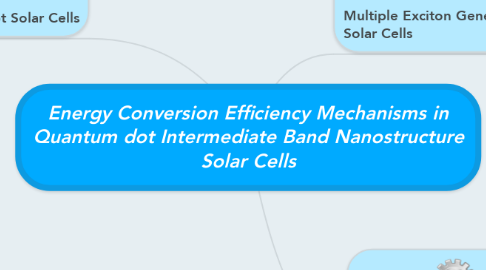Energy Conversion Efficiency Mechanisms in Quantum dot Intermediate Band Nanostructure Solar Cells
by Alejandro Carreño R.


1. Multiple Exciton Generation Solar Cells
1.1. Fundamental pathways to prevent the thermalization loss produced from the absorption of high-energy photons
1.1.1. 1) Produces an enhanced photovoltage
1.1.2. 2) Produces an enhanced photocurrent
1.2. Ionization is an inverse process of the Auger process
1.2.1. Two electron–hole pairs recombine to produce a single highly energetic electron–hole pair.
2. Intermediate Band Solar Cells
2.1. To capture and use photons with energy bandgap solar cells are used generally intermediate band
2.1.1. These materials have been in the conduction band of the conventional semiconductor
2.2. The basic structure of QD–IBSC prototype grown by molecular beam epitaxy in the Stranski–Krastanov growth mode consist of 10 layers of InAs/GaAs QDs
3. Quantum Dot Solar Cells
3.1. There are two pathways for enhancing the conversion efficiency
3.1.1. Increased Photovoltage
3.1.2. Increased Photocurrent
3.2. Quantum dots inserted in p-i-n cells
3.2.1. Arranging QDs needs the evaporation and crystallization of homogeneous colloidal QDs
3.3. Nanocrystalline TiO2 solar cells sensitized by Quantum Dots
3.3.1. A possible advantages of QDs are the tenability of optical properties of the cells
3.4. Quantum dots dispersed in conducting polymers
3.4.1. The structures of the dispersed QDs in a blend of electron and hole polymers that have shown PV effects
